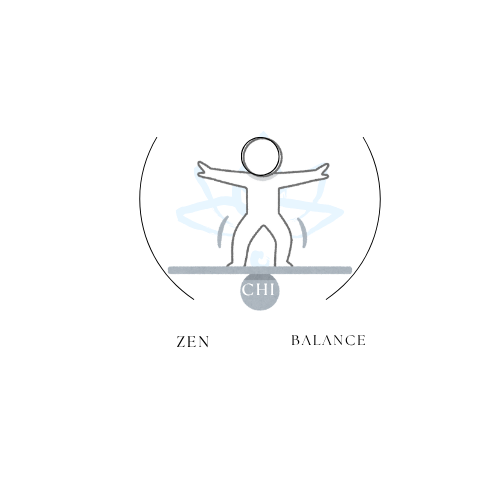
Never Give Up Framework for Turning Setbacks Into Wins
Aktie
Updated on: 2025-10-25
Table of Contents
- Essential tips to never give up with grace
- Never give up: a detailed step-by-step process
- Never give up summary and key takeaways
- Never give up: questions and answers
Many people say “never give up,” yet it can feel hard to live those words day after day. If you are navigating a challenge, you might prefer kind, realistic ways to keep going. This article offers gentle guidance so you can choose perseverance without harsh self-talk. You will see how small steps, honest check-ins, and simple prompts help you never quit. The goal is steady progress, not pressure. If you would like more supportive reading, you are welcome to browse our Blog.
Essential tips to never give up with grace
These practical ideas are easy to try and adapt. They encourage resilience without asking you to push beyond your limits.
- Choose a kind reason: Write a simple statement that answers, “Why does this matter to me?” A gentle reason reduces pressure and helps you do not give up when motivation dips.
- Make the next step tiny: Break tasks into very small actions. Clear, small moves help you never quit because progress is visible and stress stays lighter.
- Use a “start ritual”: A short routine—fill your water, open your notes, set a five-minute timer—signals your brain it is time to begin.
- Track streaks in days, not outcomes: Mark days you showed up rather than the size of results. Consistency builds perseverance.
- Plan honest rest: Sustainable effort includes breaks. Scheduled breathers protect resilience and prevent a cycle of pushing then quitting.
- Set “permission to pause” rules: Create a simple pause plan, such as “I may pause for one day, then return with a tiny step.” This keeps momentum gentle and intact.
- Write friction lists: Note what slows you down (distractions, unclear goals, clutter). Remove one friction point at a time.
- Reduce choice overload: Decide your next step in advance. Fewer decisions mean less stress and more steady action.
- Use two warm words: When you feel stuck, say “Begin softly.” These words lower tension and help you do not give up in tough moments.
- Build an environment that supports you: Keep your tools prepared and your space simple. If you would like to learn more about our approach, you can visit the About page.
Never give up: a detailed step-by-step process
The following process is simple to follow and easy to adapt. You can use it for learning a skill, growing a business, or reaching a personal milestone.
-
Define a kind, clear aim. Write one sentence: “I am working toward [goal] so I can [benefit].” Keep it brief. This aim anchors your effort without pressure.
-
List the smallest possible actions. Break your goal into actions that take five to fifteen minutes each. Smaller actions lower resistance and help you never give up when energy is low.
-
Set a gentle rhythm. Choose a minimum schedule you can keep even on busy days—perhaps five focused minutes daily or three short sessions per week. Consistent rhythm builds resilience.
-
Create a start-and-finish routine. Begin with a two-minute setup (open your plan, prep tools). End with a two-minute wrap-up (note progress, set tomorrow’s first step). These rituals reduce friction.
-
Track effort, not perfection. Use a simple checkmark for each session. Add a one-line note: “What helped?” “What got in the way?” These notes guide improvements and support perseverance.
-
Review weekly with compassion. Ask three questions: What moved forward? What felt heavy? What can be simpler next week? Gentle reviews maintain momentum and help you do not give up.
-
Adjust with care, not judgment. If a step is too big, split it. If the schedule is too tight, ease it. Adjustments protect your energy so you never quit when circumstances shift.
-
Seek support when needed. A short, supportive conversation can renew focus. If you would like to reach out, you can use our Contact page.
This step-by-step path favors steady progress over pressure. Each small action builds skill and confidence. Over time, these habits make “never give up” feel natural and sustainable.
Never give up summary and key takeaways
“Never give up” does not mean force or strain. It means caring about a goal, choosing small steps, and returning after pauses. It invites resilience through kind routines, clear plans, and honest rest. When life becomes heavy, gentle adjustments keep the path open. You might shift pace, split tasks, or ask for help. These choices support perseverance without overwhelming your energy.
If you would like to explore more resources, you are welcome to visit our Home. Thank you for reading, and may your next step be a calm one.
Never give up: questions and answers
How can I stay motivated and never give up?
Motivation rises and falls, so it helps to rely on systems rather than moods. Keep your next step tiny and written down. Use a short “start ritual” to make beginning easier. Track effort with simple marks so you see progress even on quiet days. When energy drops, reduce the step size rather than stopping. This protects momentum and keeps the door open to steady progress.
What does it really mean to never give up?
It means staying engaged with your aim through flexible effort. You may change methods, slow your pace, or pause and return, yet you remain oriented to your goal. “Never quit” is not about pushing at all costs. It is about caring for the journey, making kind adjustments, and continuing with clarity and respect for your limits.
How to never give up when life gets hard?
Consider a gentle triage. First, protect your basics—sleep, food, and a small amount of movement. Then shrink your goal to a single, five-minute action you can keep. Remove one barrier at a time—such as turning off notifications or setting tools out the night before. Use simple phrases like “Begin softly” to lower tension and start. These steps help resilience stay active without draining your reserves.
What are some never give up quotes for success I can use daily?
You may prefer short lines that center your focus. Here are a few simple statements you can use or adapt: “One small step, right now.” “Steady over perfect.” “Return with kindness.” “Tiny progress counts.” “Begin softly.” Keep them where you will see them—on a note, a calendar, or a lock screen—to encourage perseverance when motivation is low.

I'm a passionate curator at Zen Chi Balance, dedicated to spreading calm, harmony, and mindful living through faith-inspired lifestyle products. I help craft meaningful experiences for our global community of mindful shoppers.
The content in this blog post is intended for general information purposes only. It should not be considered as professional, medical, or legal advice. For specific guidance related to your situation, please consult a qualified professional. The store does not assume responsibility for any decisions made based on this information.
